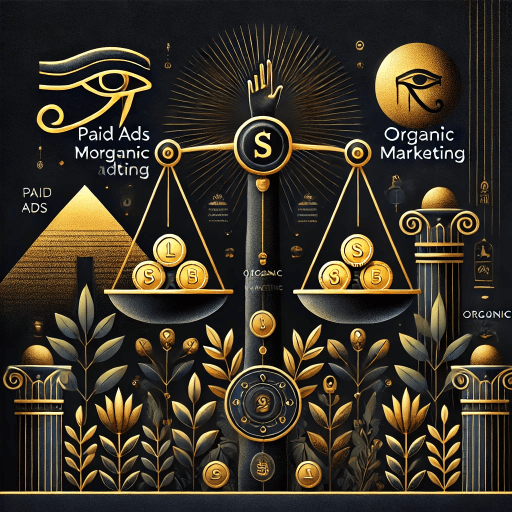Paid Ads vs. Organic Marketing: Which is Right for Your Business?
- ymeo
- 0 Comments
When it comes to digital marketing, businesses often face the decision of whether to invest in paid advertising or focus on organic marketing strategies. Both approaches have their advantages and drawbacks, and the best choice depends on your goals, budget, and target audience. In this article, we’ll explore the pros and cons of each strategy, and how to find the right balance to maximize your marketing efforts.
What is Paid Advertising?
Paid advertising refers to any form of digital marketing where you pay to promote your content or products. This can include pay-per-click (PPC) ads on platforms like Google and Bing, social media ads on platforms such as Facebook, Instagram, and LinkedIn, as well as display ads on various websites. Paid ads can deliver quick results, but they require a budget to maintain and optimize.
What is Organic Marketing?
Organic marketing involves using non-paid methods to attract and engage your target audience. This can include search engine optimization (SEO), content marketing, social media engagement, and email newsletters. Organic strategies focus on building long-term relationships and driving traffic without direct advertising costs.
Pros and Cons of Paid Advertising
Pros:
- Immediate Results: Paid ads can generate traffic, leads, and conversions quickly, making them ideal for promotions, product launches, or sales events.
- Precise Targeting: Paid advertising allows you to target specific demographics, locations, and interests, ensuring that your message reaches the right audience.
- Scalability: Paid ad campaigns can be easily scaled up or down depending on your budget, offering flexibility for businesses of all sizes.
Cons:
- Costs Add Up Quickly: Running paid ads can be expensive, especially for competitive keywords or industries with high cost-per-click (CPC) rates.
- Short-Term Impact: The results from paid ads stop as soon as the budget runs out, meaning you need to keep investing to maintain traffic and leads.
- Ad Fatigue: Users may grow tired of seeing the same ads repeatedly, leading to decreased engagement over time.
Pros and Cons of Organic Marketing
Pros:
- Cost-Effective: Organic marketing doesn’t require direct payment for traffic, making it a more affordable option for small businesses or those with limited budgets.
- Long-Term Benefits: High-quality content, SEO efforts, and social media engagement can continue to drive traffic and generate leads over time, even without ongoing investment.
- Builds Trust and Authority: Organic marketing strategies, such as publishing valuable content and engaging on social media, help establish your brand as a trusted authority in your industry.
Cons:
- Takes Time to See Results: Unlike paid ads, organic marketing requires patience, as it can take months to build up significant traffic or see noticeable improvements in search rankings.
- Requires Consistent Effort: To maintain visibility, organic strategies require continuous effort, such as regularly updating content, posting on social media, and optimizing for SEO.
- Less Control Over Targeting: While SEO and content can help attract a targeted audience, there is less control compared to paid ads that allow for specific audience targeting.
How to Balance Paid Ads and Organic Marketing
For the best results, businesses should aim to integrate both paid and organic marketing strategies. Here’s how you can effectively balance the two:
- Use Paid Ads for Quick Wins and Promotions: If you’re running a limited-time offer, launching a new product, or trying to drive traffic quickly, use paid ads to get immediate visibility. This can help boost brand awareness and attract new customers quickly.
- Invest in Organic Marketing for Long-Term Growth: While paid ads bring in quick results, organic strategies should be the foundation of your digital marketing efforts. Invest in SEO, content creation, and social media engagement to build a sustainable source of traffic that doesn’t rely on ad spend.
- Retarget Visitors Using Paid Ads: Once you’ve attracted visitors through organic content, use retargeting ads to bring them back to your website and encourage conversions. This helps maximize the value of your organic traffic by keeping your brand top-of-mind.
- Measure Performance and Adjust Accordingly: Regularly track the performance of both your paid and organic strategies. Use analytics tools to understand which tactics are driving the most value, and adjust your budget and efforts to focus on the channels that deliver the best ROI.
Conclusion
Both paid ads and organic marketing have unique benefits that can help your business reach its goals. While paid ads deliver fast results and precise targeting, organic marketing provides long-term growth and builds trust with your audience. By integrating both strategies and finding the right balance, you can create a comprehensive marketing approach that drives consistent traffic, leads, and sales.




